Andy DC dug up this 1993 NCDC document, which showed that US winter temperatures had remained essentially constant from 1896 to 1993.
That of course isn’t any use for funding, so they have since altered the data to make it appear to be warming.
The animation below shows how they cooled the past.
They used a pretty generic data tampering algorithm, of simply cooling the past linearly to create a non-existent warming trend.
By doing this, they managed to make the post-1920 cooling trend disappear, which is what political expediency requires.
But it is worse than it seems – since 1993, US winter temperatures have plummeted, while NCDC shows the US continuing to warm.

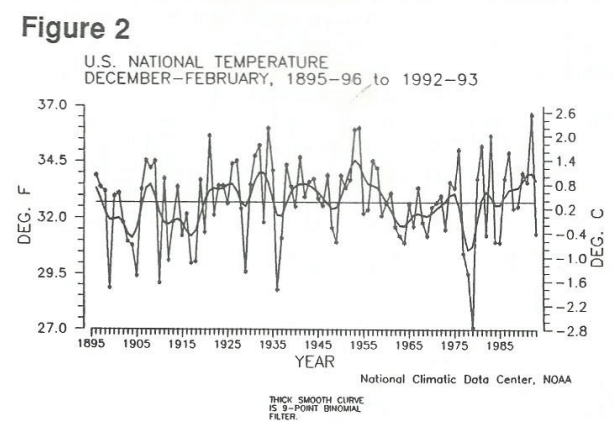
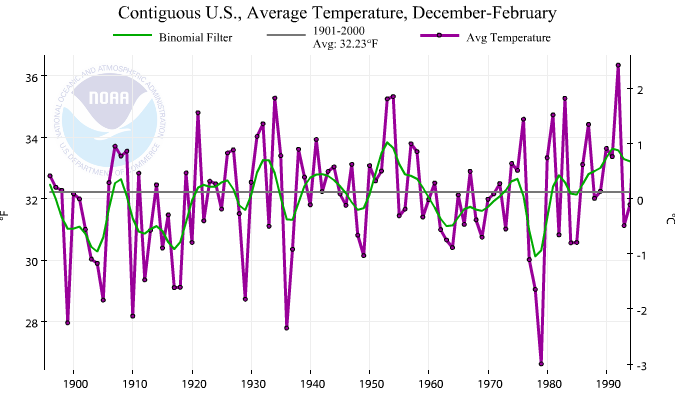
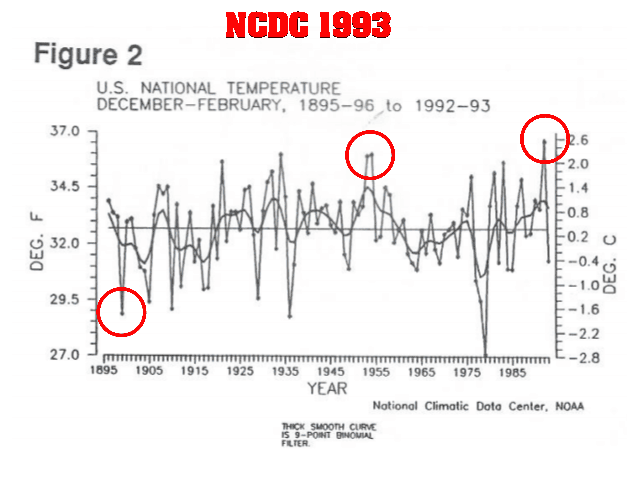
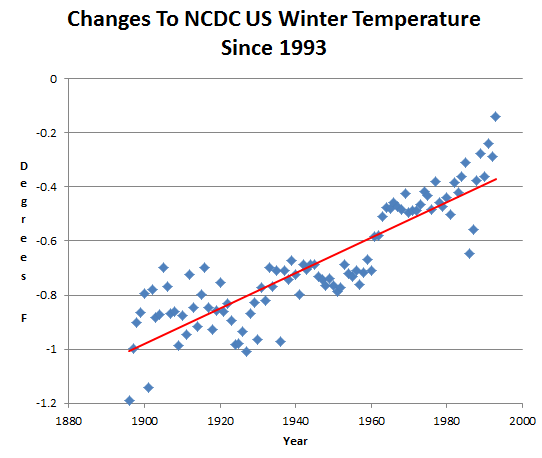
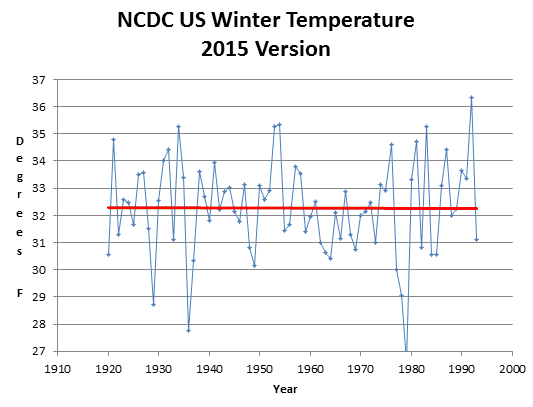
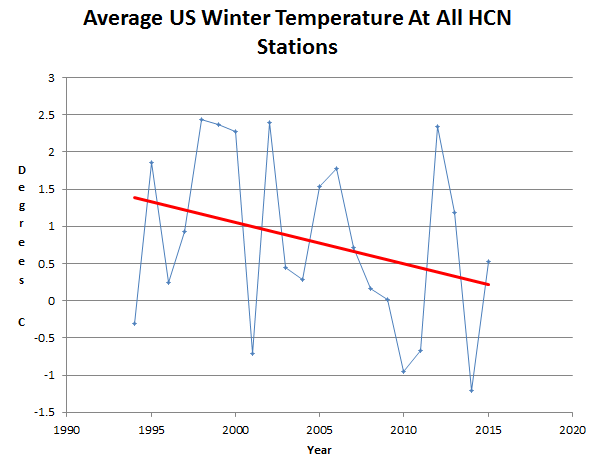
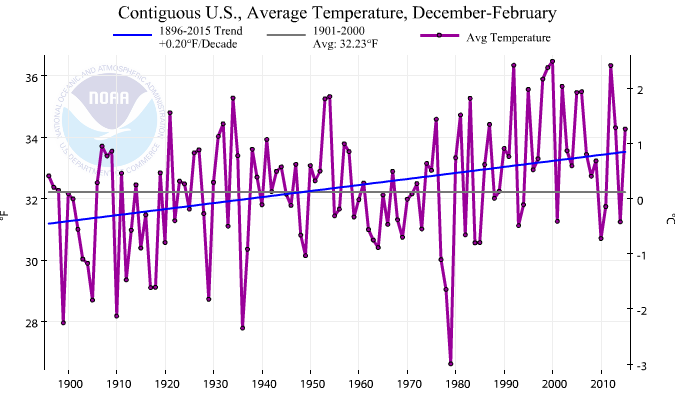

“But it is worse than it seems – since 1993, US winter temperatures have plummeted, while NCDC shows the US continuing to warm.”
1993 was still being affected by stratospheric particulate cooling from the June ’91 Pinatubo eruption. So, being cooler now than then, it really is worse than it seems.
Now we are down to discussing the relative merits of data tampering methodology. Oh, that’s just yer basic linear adjustment, I’ve seen much more sophisticated tampering than that.
Sad really. The endpoint of science is where scientists study ways to outsmart other scientists and grab the grant money. Makes you wonder how many times this has happened before.
Creating artifacts out of data for analysis may be useful for someone, somehow. But to put these figures up without explaining that these are not real numbers, and that the actual data has been altered many times, is criminal. It is fraud.
http://www.foxnews.com/us/2015/04/20/bear-necessities-grizzlies-waking-up-from-hibernation/
‘Experts say some of the sightings have been a little earlier than usual, but not so early as to be alarming.
“Sometimes it’s early and sometimes it’s late,” Warner said. “It’s really a question of ‘how hungry are they?’ If they wake early, it’s not because of climate change.”
How long hibernation lasts has more to do with the beginning, not the end, of the process, he said.
“It’s really about how much food sources are available into the late fall season,” he said. “If the bears find animal carcasses and food sources late in the season they tend to hibernate longer.”’
Or maybe a Decline In US Winter Temperature and a longer winter starting earlier.
Reblogged this on Centinel2012.